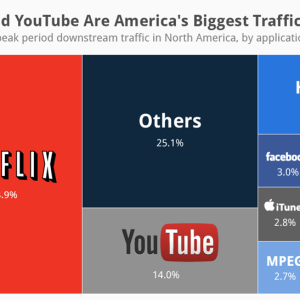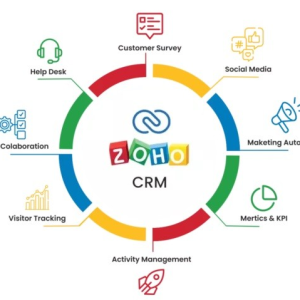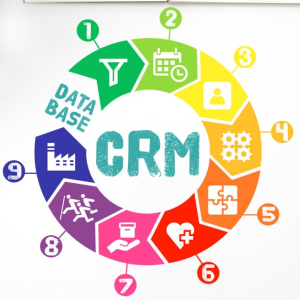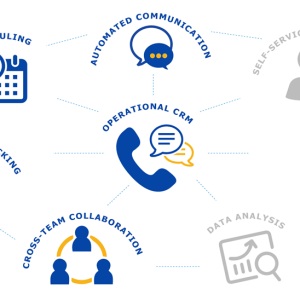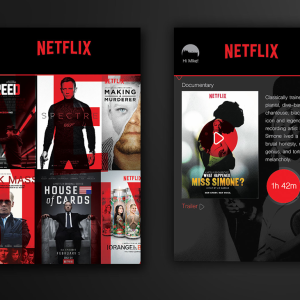Introduction
55% of B2C marketers outsource content marketing.
(Content Marketing Institute)
Content marketing is one of the most important aspects of a successful online presence, but it can also be one of the most difficult to get right. Many businesses make common content marketing mistakes which can lead to a failed campaign with little return on investment. However, by taking the time to plan and create valuable content, you can avoid these common pitfalls and see better results from your content marketing efforts.
In this article, you will learn about the most common content marketing mistakes that businesses make when it comes to content marketing, and how you can avoid making these same mistakes in your campaigns. Let’s get started!

Content Marketing Mistakes #1. Pepsi
In recent years, Pepsi has been behind the curve when it comes to content marketing. While other brands have been producing quality content that engages and entertains consumers, Pepsi has largely relied on traditional advertising methods.
Problem
This lack of a solid content marketing strategy has resulted in several failed campaigns, such as the “Pepsi Refresh Project.”
The Pepsi Refresh Project was an attempt to engage consumers in a new way. Pepsi invited people to submit ideas for community projects, and then voted on which projects should receive funding. However, the project was quickly met with criticism. Many felt that it was a way for Pepsi to avoid spending money on traditional advertising and that the projects chosen were not truly worthy of funding. In the end, the project was a failure, and Pepsi was forced to reevaluate its content marketing strategy.
Solution
The Pepsi content marketing campaign was a complete failure. But there are things you can do differently if want better results from your efforts in this area–here they all are:
1. Make sure that every aspect of the project comes together seamlessly
2. Be mindful about what kind of tone will work best for each type/style (funny vs serious)
3. Consider who would enjoy viewing this information and how often it might be seen by them?
You don’t have to be a beverage company with huge pockets and an army of writers at your disposal for content marketing success. But following the right strategies is always a start.
Content Marketing Mistakes #2. Volkswagen
Volkswagen is a prime example of a company that failed to execute a successful content marketing strategy. Despite spending millions of dollars on content, their efforts yielded very little return on investment.
Problem
Some of the reasons for their failed campaign include:
#1 Failing to produce quality content
Much of Volkswagen’s content was self-promotional and not relevant or valuable to their target audience. As a result, readers didn’t engage with it, and the campaign had little impact on sales.
#2 Not adequately planning their content marketing efforts
Volkswagen focused primarily on quantity over quality when it came to content production, without giving much thought to strategy or targeting. This is a common mistake that many companies make, and one that can lead to a failed campaign.
#3 Not measuring results
Volkswagen did not track their content marketing efforts effectively, so they didn’t know how effective their campaigns were in terms of ROI or impact on sales. Without this data, it was difficult for them to improve their strategy or identify where they needed to make changes.
Solution
If Volkswagen had taken the time to plan their content marketing efforts more carefully and focused on quality over quantity, they likely would have seen better results from their campaigns. By considering the above steps, and not doing the mistakes they did, you can create a successful, effective content marketing strategy for your business.
Content Marketing Mistakes #3. McDonald’s
McDonald’s is one of the most well-known brands in the world, but its content marketing strategy has failed to live up to expectations.
Problem
#1 Focus on quantity over quality
For example, their website is filled with short, low-quality articles that are often promotional.
#2 Outdated content
They rarely post new content, meaning that their site is quickly becoming outdated.
#3 Lack of focus on SEO
Their website is not optimized for search engines, which means that it is difficult for potential customers to find their content. Additionally, they have not invested in paid advertising to promote their content, meaning that it is largely invisible to their target audience.
#4 Slow to adapt to the changing landscape of content marketing
They have not made use of newer platforms such as social media and video sharing sites, which could help them reach a wider audience. Additionally, they have not kept up with the latest trends in content marketing, such as building a strong community on social media and creating unique, engaging content.
Solution
If, unlike McDonald’s you want to improve your success with content marketing, your business needs to focus on quality over quantity. This means posting consistently high-quality content that is relevant to your target audience and optimized for search engines. Additionally, investing in paid advertising to promote your content and making use of newer platforms and trends to reach a wider audience. Only by making these changes will you be not following the steps of a bad strategist and be able to improve your content marketing strategy and see better results.
Content Marketing Mistakes #4. Nokia
Nokia is a good example of a company that failed with its content marketing strategy. In 2013, Nokia decided to shut down its content portal, which was a huge mistake. The site was home to a variety of content, including articles, videos, and tutorials. However, Nokia didn’t invest enough in the site, and it showed in the content. The articles were poorly written and the videos were of low quality. As a result, Nokia’s content marketing efforts failed to generate any results.
What not to do?
If you’re thinking about starting a content marketing campaign, avoid making the same content marketing mistakes as Nokia. Plan your strategy carefully, invest in high-quality content, and measure your results to ensure that you’re seeing a return on your investment. If you do these things well, then your content marketing efforts are sure to be successful and boost your bottom line.
There IS still hope
While Nokia’s content marketing strategy might have failed in the past, there is still hope for the future. The company just recently announced that it will partner with Microsoft to create new mobile devices. This is a smart move, as Microsoft has a lot of experience in the content marketing space. With its help, Nokia can create high-quality content that will engage and convert customers.
If you’re looking for help with your content marketing strategy, then consider partnering with an agency like 12 Channels. We can help you create a plan, produce quality content, and measure your results so that you can avoid making the same content marketing mistakes as Nokia.
But first, keep reading, because the secret to a successful content business is knowing what not to do.
Content Marketing Mistakes #5. Blockbuster
Blockbuster is a great example of a company that failed to execute a successful content marketing strategy. They focused on creating promotional content, rather than providing value to their audience. As a result, they didn’t see the engagement or ROI they were hoping for.
“Their mistakes are your solutions”
#1 Failing to understand its audience
They produced content that was of interest to them, rather than their customers. As a result, their content didn’t resonate with their target market.
#2 Not measuring the results of their content marketing efforts
Without data, it’s difficult to know what’s working and what’s not. Without this feedback, you can’t adjust your strategy accordingly.
#3 No plan for its content marketing strategy
They produced content haphazardly, without a clear purpose or goal in mind. As a result, their content wasn’t as effective as it could have been.
The point of learning from mistakes is that you don’t repeat them. You see, we’ve all learned from somebody else’s mistakes at one point or another in our lives and while they may be true for some people who are lucky enough to get away without any consequences themselves – most of us will end up paying a price eventually!
The list is endless:
From Kodak-which filed for bankruptcy protection in 2012 after releasing new digital cameras that were less popular than traditional film models -to Sears’ resurrection as an e-commerce giant thanks largely to its website featuring heavily discounted items; down through Newsweek magazine which closed last year following disappointing subscription numbers (and despite having received funding from Donald Trump). What lesson can we learn here about marketing strategy failure?
What do these companies have in common?
They’re all examples of successful content marketing campaigns that never made it big. The ones who succeeded knew to stay true by following their audiences’ urges and desires, even if that meant adapting or changing course altogether sometimes!
4 Brands That Faced Penalties on Google
Even the best content marketing campaigns can go wrong if you’re not careful. If you’re not producing quality content, or if you’re not measuring your results, you could face penalties from Google. Here are a few brands that faced penalties from Google in recent years:
1. JCPenney
In 2011, JC Penney was hit with a Google penalty for using unnatural links to promote their website. The company had been paying for links, which is against Google’s guidelines. As a result, JC Penney’s website lost its rankings in Google search results.
2. Overstock.com
In 2013, Overstock.com was penalized by Google for using shady link-building tactics to improve its rankings. They paid for links from a variety of websites, including those that had nothing to do with Overstock’s products or services. In addition, they linked to these sites using keywords in the anchor text, instead of generic terms like “click here.”
3. Interflora
In 2014, Interflora was penalized by Google for participating in a link scheme. The company had been paying bloggers to write about Interflora and include links to their website. In many cases, these links were not marked as paid or sponsored, which is against Google’s guidelines.
4. BMW
In 2015, BMW was penalized by Google for using unnatural links to promote its website. The company had been paying bloggers to post links to their site on popular sites, but these links were not marked as paid or sponsored. As a result, BMW’s rankings in search results dropped significantly.
As you can see, even the biggest and most well-known brands can face Google penalties if they’re not careful with their content marketing strategy. But don’t worry, every problem in the world has a solution, so do to avoid duplicate content and penalties.
10 Ways To Avoid Duplicate Content and Penalties

The content marketing landscape has changed drastically in the last couple of years, with Google placing a heavy emphasis on originality. The penalties for duplicate posts have become more strict and now include an automatic suppression of ranking improvements as well! Here are 10 ways you can avoid these intimidating consequences:
1. Create original content
This is the most important thing you can do to avoid duplicate content penalties. Instead of stealing content from another source, focus on creating unique and original content that speaks to your target audience.
2. Take advantage of internal linking and navigation
Linking to other pages on your site can help you avoid duplicate content penalties by sending users to relevant or related information. You should also use internal links in your blog posts and articles to make it easy for readers to find more information on your site.
3. Use canonical tags
If you have similar content on multiple pages of your site, you can use canonical tags to tell Google which version of the content is the original. This will help Google index the correct page and avoid duplicate content penalties.
4. Avoid using multiple URLs for the same content
Sometimes, different versions of the same URL can be used to access the same content on your site. For example, if you have a blog post with a “/?page_id=7” tag at the end of its URL, this will lead users to that page and give Google duplicate content.
5. Use robots.txt to block duplicate content
If you have pages on your site that contain duplicate content, you can use the robots.txt file to tell Google not to index those pages. This will help avoid any penalties associated with that content.
6. Avoid republishing content from other sources
If you want to include content from another source on your site, it’s important to get permission first. Republishing someone else’s content without their permission could lead to a duplicate content penalty.
7. Use 301 redirects for moved content
If you need to move content from one URL to another, you should use a 301 redirect. This will tell Google that the content has been moved to a new location and help avoid any duplicate content penalties.
8. Don’t use session IDs in URLs
If your site uses session IDs, it’s important to remove them from the URL before publishing the content. Session IDs can cause duplicate content issues and should be avoided.
9. Don’t use affiliate codes in URLs
Much like session IDs, affiliate codes can also lead to duplicate content issues. If you’re using affiliate codes, make sure to remove them from the URL before publishing the content.
10. Use SSL to avoid duplicate content issues
If you have an SSL certificate installed on your site, make sure that you remove the “WWW” and “HTTP” parts of the URL before publishing your content. Having these in the URL can cause issues with Google and lead to duplicate content penalties.
By taking these steps, you can avoid duplicate content penalties from Google and ensure that your content marketing efforts are successful.
The 5 TellTales of Bad Content

Detecting bad content can be difficult, but there are a few telltale signs that can help you determine if a piece is worth publishing. Here are five ways to detect bad content:
1. The content is poorly written or contains many errors.
2. The content is thin or incomplete, and doesn’t provide any value to the reader.
3. The content is aimed at the wrong audience and doesn’t resonate with your ideal readers.
4. The topic or subject matter of the content isn’t relevant to your business goals, target market, or niche.
5. The topic has been covered extensively elsewhere on the web, so there’s little value in writing about it again.
If you want to produce high-quality content that resonates with your target audience and generates results, there are several strategies you can use. First, take the time to plan out a content strategy that outlines which topics you’ll cover and how often you’ll publish new content. Next, work on producing valuable content using research, data, and stories to support your claims. Finally, measure the results of your content marketing efforts to ensure you’re seeing a positive return on investment.
Conclusion
Content marketing can be a great way to reach new customers and boost your business, but only if it’s done correctly without the burden of content marketing mistakes. Planning is the key to success when it comes to content marketing. Failing by not having a plan will result in low ROI and possibly wasted time, money, or both on your part! To avoid these complications take some initiative so you can see better results from this new form of advertising. A well-thought-out strategy with clear steps makes all things easier – including planning for future campaigns ahead of schedule.
We hope that this guide has helped make the right decisions for your project without making the same content marketing mistakes the brands did. If you have any questions or need further assistance, please feel free to contact us. Our team at 12 channels is happy to assist. So what are you waiting for? Contact us today and let us show you how well-thought content can change the dynamics of your business! You may be surprised at how well it works!




